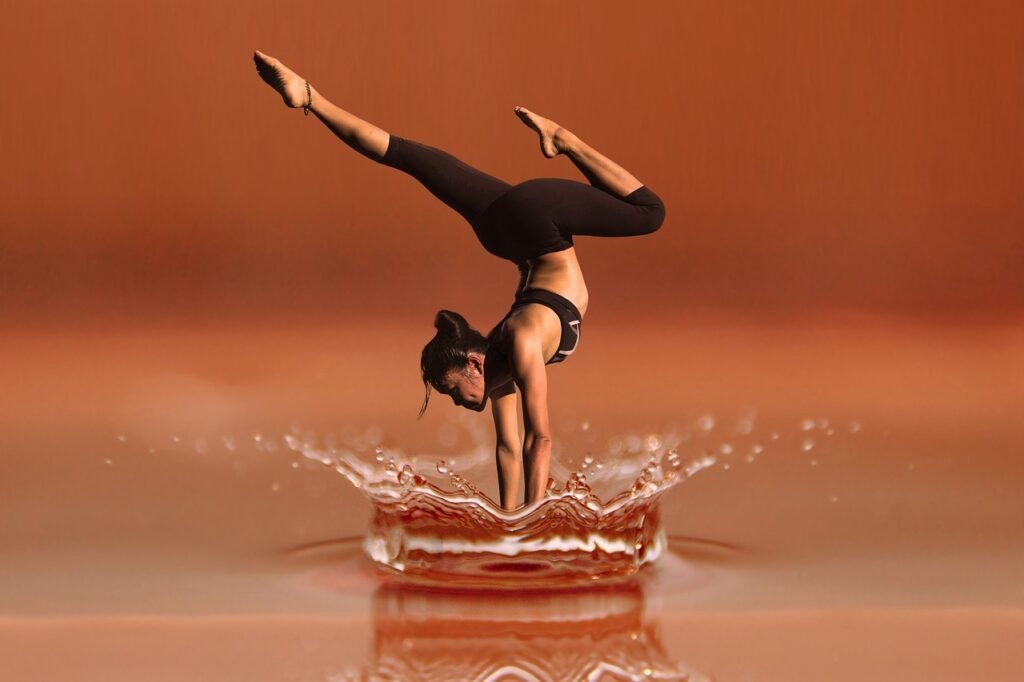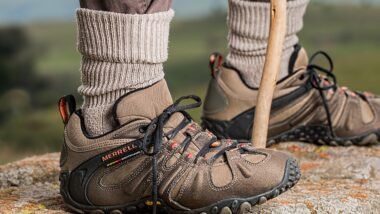Are you an avid hiker looking to conquer more challenging hill walks? If so, improving your balance and coordination is key to ensuring a safe and successful journey. Whether you’re a beginner or have been hiking for years, this article will provide you with practical tips and exercises that will help you strengthen your core, improve your stability, and enhance your overall hiking experience. So lace up your boots, embrace the adventure, and get ready to take your hill walks to new heights!

This image is property of pixabay.com.
1. Strengthening the Lower Body
1.1 Squats
Squats are a fantastic exercise for strengthening your lower body, including your glutes, quadriceps, and hamstrings. To perform a squat, stand with your feet shoulder-width apart, keeping your back straight and your chest up. Slowly lower your body down as if you are sitting back into a chair, ensuring that your knees do not extend past your toes. Push through your heels to return to the starting position. Start with bodyweight squats and gradually increase the difficulty by adding weights or trying variations such as sumo squats or Bulgarian split squats.
1.2 Lunges
Lunges target your quadriceps, hamstrings, and glutes while also improving your balance and stability. Begin by standing tall with your feet hip-width apart. Take a step forward with one foot and lower your body until both knees are bent at a 90-degree angle. Make sure to keep your front knee directly above your ankle and your back knee hovering just above the ground. Push through your front heel to return to the starting position. You can also add variations to lunges, such as walking lunges or reverse lunges, to further challenge your lower body muscles.
1.3 Calf Raises
Calf raises are an excellent exercise for strengthening your calf muscles, which play a crucial role in maintaining balance and stability. Stand with your feet hip-width apart, then raise your heels off the ground until you are standing on your toes. Slowly lower your heels back down to the ground and repeat for several repetitions. To increase the difficulty, try doing single-leg calf raises or perform the exercise on an elevated surface such as a step.
2. Core Stability Exercises
2.1 Plank
Planks are a fundamental exercise for building core stability. Start by lying face down on the ground and prop yourself up on your forearms and toes, keeping your body in a straight line. Engage your core muscles and hold this position for as long as you can, aiming to gradually increase your endurance over time. To add variation, you can try side planks or elevated planks by resting your hands on an elevated surface like a stability ball.
2.2 Russian Twists
Russian twists target your obliques and help improve rotational stability. Sit on the ground with your knees bent and feet flat on the floor. Lean back slightly while keeping your back straight and lift your feet off the ground. From this position, twist your torso to one side, touching the ground with your hands. Return to the center and then twist to the other side. You can make it more challenging by holding a weight or medicine ball while performing the twists.
2.3 Superman
Supermans are excellent for strengthening your lower back muscles, which are essential for maintaining good posture and balance. Lie face down on the ground with your arms extended in front of you. Simultaneously lift your arms, chest, and legs off the ground, keeping your gaze down to protect your neck. Hold this position momentarily and then lower back down. Repeat for several repetitions, gradually increasing the duration of the hold as you become stronger.
3. Proprioception Training
3.1 Single Leg Balancing
Single leg balancing exercises are a great way to improve your proprioception and strengthen the muscles that support your ankles and knees. Stand on one leg and try to maintain your balance for as long as possible. Once you feel comfortable, you can make it more challenging by closing your eyes or performing small movements with your free leg. Repeat on the other leg.
3.2 BOSU Ball Exercises
BOSU balls are versatile tools that can be used to enhance balance and proprioception. You can start by standing on the BOSU ball with both feet and trying to maintain your balance. As you progress, you can try standing on one leg or performing exercises such as squats or lunges on the BOSU ball, which will further challenge your stability.
3.3 Wobble Board Training
Wobble boards are another effective tool for proprioception training. These boards have an unstable surface that forces your body to constantly adjust to maintain balance. You can start by simply standing on the wobble board and gradually increase the difficulty by performing exercises like squats or lunges while on the board. The wobble board will help strengthen the muscles responsible for stability and coordination.
4. Balance Training Tools
4.1 Balance Discs
Balance discs are small, inflatable discs that can be used to improve balance and stability. By standing or sitting on the disc, your body is forced to make constant micro-adjustments, enhancing your proprioception. Balance discs can be used for a variety of exercises, such as standing on one leg or performing squats while standing on the disc.
4.2 Balance Boards
Balance boards consist of a platform with a rounded bottom, creating an unstable surface. By standing or performing exercises on a balance board, you challenge your balance and stability. Start by simply standing on the balance board and try to maintain your balance. As you progress, you can try performing exercises like squats or lunges on the board.
4.3 Balance Cushions
Balance cushions are soft, inflatable discs that can be used to improve balance and stability. By sitting or standing on a balance cushion, your body is forced to make constant micro-adjustments to maintain balance. You can perform exercises such as standing on one leg or balancing on the cushion while performing upper body movements to further challenge yourself.

This image is property of pixabay.com.
5. Yoga and Pilates
5.1 Tree Pose
Tree pose is a classic yoga pose that helps improve balance and stability. Stand tall and shift your weight onto one foot. Place the sole of the opposite foot on the inner thigh of your standing leg, avoiding placing it on the knee. Find your balance and bring your hands together at your chest. You can start with your toes resting on the ground and gradually work towards lifting your foot off the ground. Focus on a point in front of you to help maintain your balance.
5.2 Warrior Pose
Warrior poses, particularly Warrior III, are excellent for enhancing balance and stability. Begin by standing tall and then lift one leg off the ground, extending it straight behind you. Simultaneously, extend your arms forward and keep your torso parallel to the ground. Engage your core muscles and find your balance in this challenging pose. You can modify the pose by keeping your toes on the ground or using a wall for support.
5.3 Pilates Balance Exercises
Pilates offers various exercises that focus on core stability and balance. Moves like the single-leg stretch or scissors challenge your core muscles and coordination. Incorporate exercises like the roll-up or standing side leg lifts to further work on balance and stability. Pilates classes or online tutorials can provide guidance on proper technique and progression.
6. Agility Drills
6.1 Ladder Drills
Ladder drills are a fun way to improve agility, footwork, and coordination. Lay an agility ladder on the ground and perform various patterns and movements, such as quick feet, lateral movements, or hopping in and out of the ladder. Challenge yourself by increasing the speed and complexity of the drills.
6.2 Cone Drills
Set up a series of cones in a pattern or around a designated area. Perform agility drills by weaving in and out of the cones using quick, precise movements. You can try different variations like figure 8 patterns or zig-zags to challenge your coordination and agility further.
6.3 Shuttle Runs
Shuttle runs involve sprinting or running back and forth between two designated points. This exercise helps improve speed, agility, and coordination. Set two markers a specific distance apart and sprint between them, touching the line with your hand before turning and running back. Repeat for several repetitions, gradually increasing the distance and intensity.

This image is property of pixabay.com.
7. Coordination Exercises
7.1 Juggling
Juggling is not only a fun activity but also an excellent way to improve hand-eye coordination and focus. Start with one ball and gradually work your way up to juggling multiple balls. There are plenty of tutorials and resources available online to help you get started.
7.2 Agility Ladder Drills
As mentioned earlier, agility ladder drills are great for improving coordination as well. By performing various movements and patterns in the ladder, you challenge your coordination and footwork. Focus on staying light on your feet and maintaining a quick pace.
7.3 Jump Rope
Jumping rope is a classic coordination exercise that also provides cardiovascular benefits. Start with basic jumps, gradually increasing the speed and complexity of the movements. You can incorporate variations like single-leg jumps or double unders to further challenge your coordination.
8. Walking with Backpack
8.1 Start with Light Load
Walking with a backpack adds an extra challenge to your balance and stability. Begin by carrying a light load in your backpack, gradually increasing the weight as you become comfortable. This will help strengthen your muscles and improve your balance gradually.
8.2 Increase Weight Gradually
As mentioned above, it is essential to increase the weight in your backpack gradually to avoid straining your body. Gradually adding more weight will allow your muscles to adapt and become stronger, improving your balance and stability in the process.
8.3 Focus on Technique
When walking with a backpack, it is crucial to maintain proper technique and posture. Keep your back straight, engage your core muscles, and take balanced steps. Be mindful of your foot placement and distribute the weight evenly throughout your body. Maintaining good technique will help maximize the benefits of walking with a backpack and minimize the risk of injury.
9. Trail Running
9.1 Build Endurance
Trail running is an excellent way to improve balance, coordination, and overall fitness while enjoying nature. Start by incorporating shorter trail runs into your routine and gradually increase the distance and intensity. This will help build endurance, improve your balance on uneven terrain, and enhance your overall coordination.
9.2 Enhance Balance on Uneven Terrain
Trail running exposes you to different natural terrains, including hills, rocks, and uneven surfaces. Running on these terrains challenges your balance and coordination. Focus on maintaining a stable core, being light on your feet, and adapting your stride to the changing terrain. Over time, your balance and coordination on uneven surfaces will improve.
9.3 Increase Speed and Agility
As you become more comfortable with trail running, you can start incorporating speed and agility drills into your runs. Incorporate intervals of faster sprints, lateral movements, or quick changes in direction. These drills will further challenge your coordination and improve your ability to adapt to different trail conditions.
10. Practice Hill Walking
10.1 Find Suitable Hills
Hill walking is an excellent way to improve your balance, coordination, and lower body strength. Start by finding hills or inclines in your area that are suitable for your fitness level. Look for hills with varying degrees of steepness to gradually increase the challenge over time.
10.2 Use Proper Footwear
When hill walking, it is crucial to wear appropriate footwear that provides stability and grip. Look for hiking boots or trail shoes with good traction to prevent slipping and support your feet and ankles. Proper footwear will enhance your balance and coordination on challenging terrain.
10.3 The Right Pace
Maintaining the right pace is essential when hill walking. Take smaller, quicker steps when going uphill to maintain your balance and leverage the power of your lower body muscles. When going downhill, slow down and take more deliberate steps to avoid losing your balance. Finding the right pace will help you maintain stability and coordination throughout your hill walks.
By incorporating these exercises and practices into your routine, you can improve your balance and coordination, making challenging hill walks more enjoyable and safer. Remember to start gradually and listen to your body to avoid overexertion or injury. With consistency and perseverance, you will notice improvements in your overall stability, agility, and confidence during hill walks and other physical activities.
Hi there! I’m the Editor, experienced outdoor development specialist, mountaineer and the mind behind ‘Country Rambler.’ I’m thrilled to welcome you to our website, your go-to destination for all things hill walking and rambling. Whether you’re an experienced adventurer or just dipping your toes into the great outdoors, I’ve got you covered. From providing guidance on essential gear, like boots and jackets, to sharing trail tips that range from peaceful paths to challenging peaks, I’ve got everything you need to embark on your next adventure. Stay in the loop with our fresh news updates and trail information. So, lace up those boots and join me as we explore the breathtaking landscapes together. Happy wandering!


